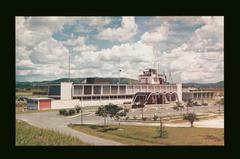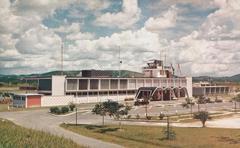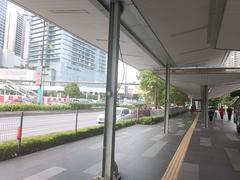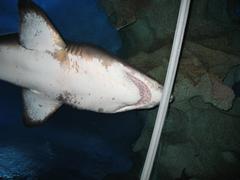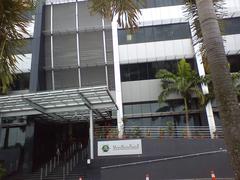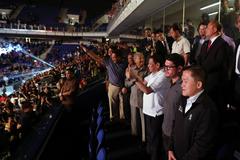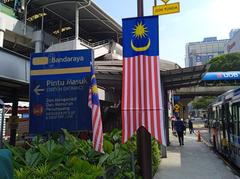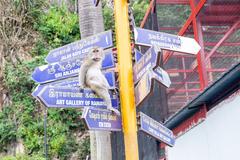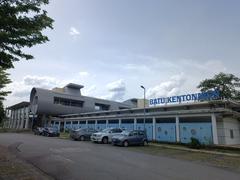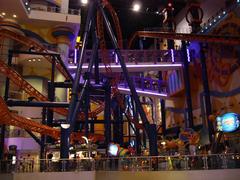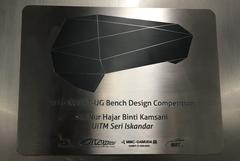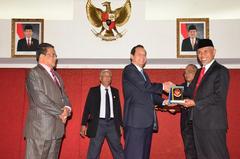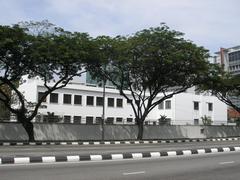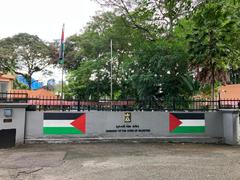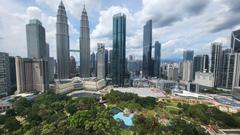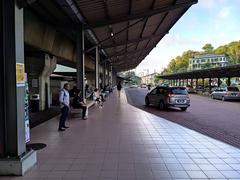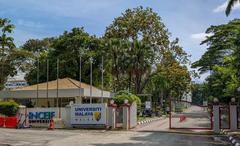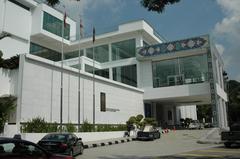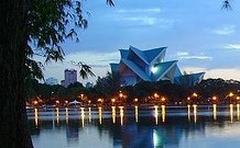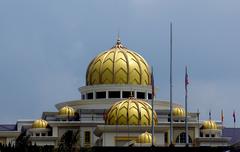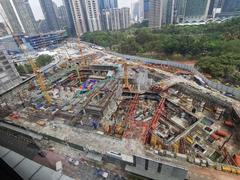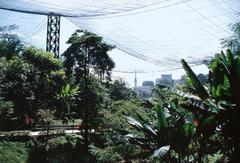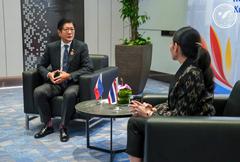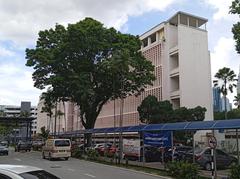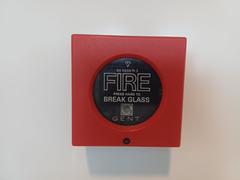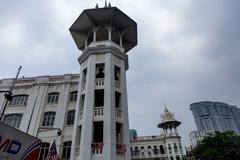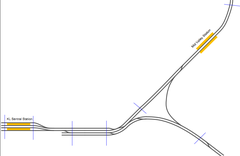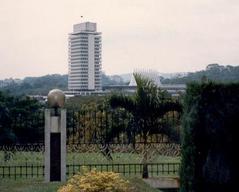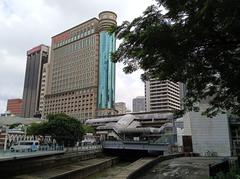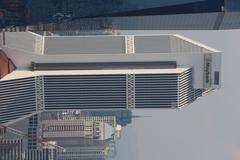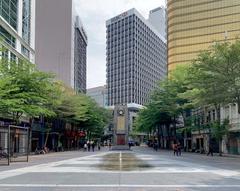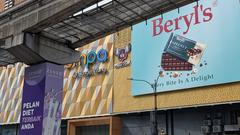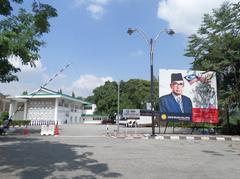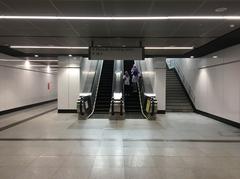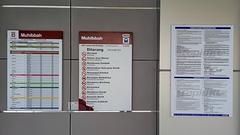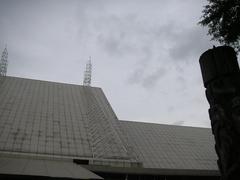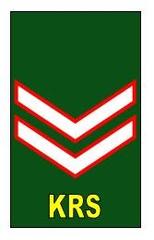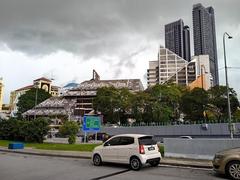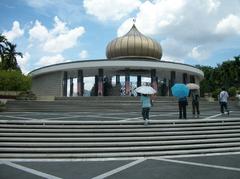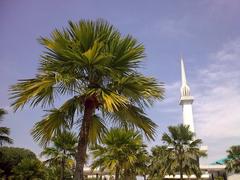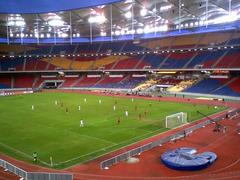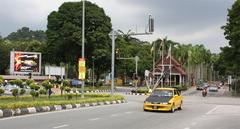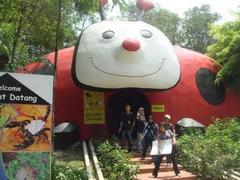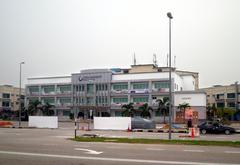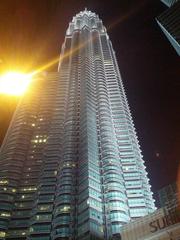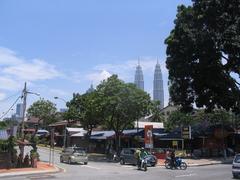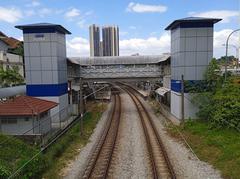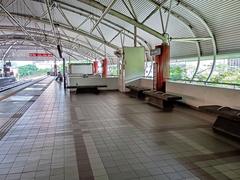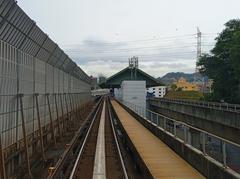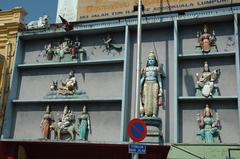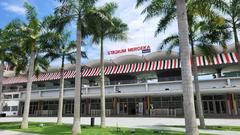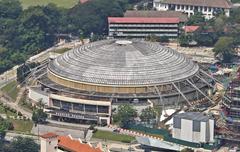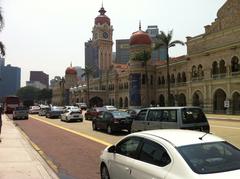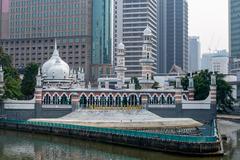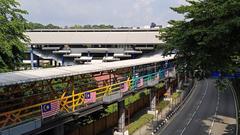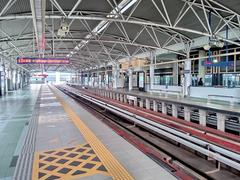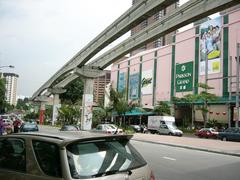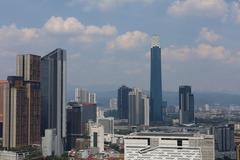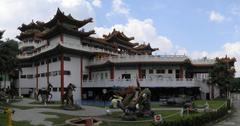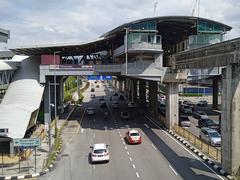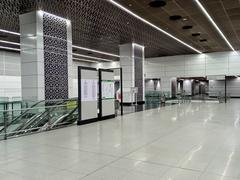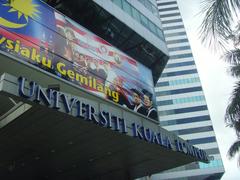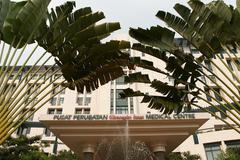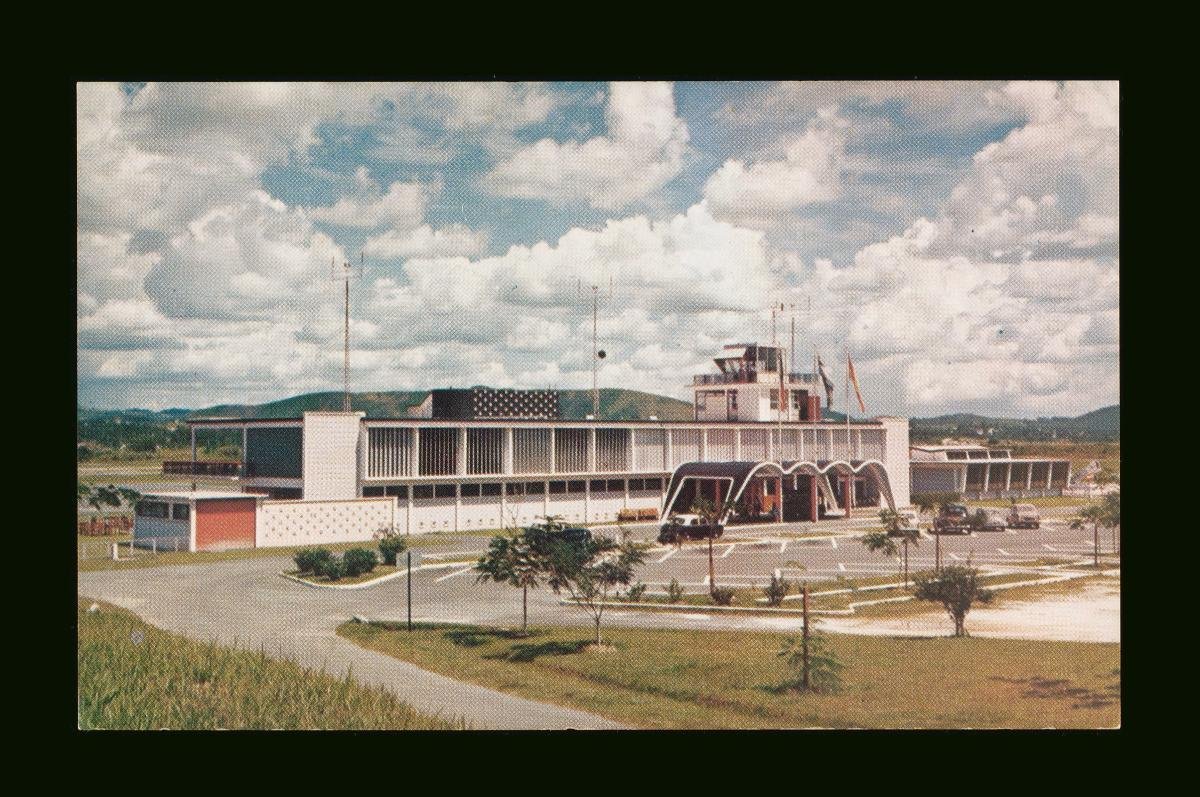
Simpang Airport Visiting Hours, Tickets, and Guide to Kuala Lumpur Historical Sites
Date: 15/06/2025
Introduction to Simpang Airport and Its Importance in Kuala Lumpur
Simpang Airport, historically known as Sungai Besi Airport and RMAF Kuala Lumpur Air Base, is a landmark deeply embedded in Malaysia’s aviation and military heritage. Established in the early 1930s as the nation’s first airport, it marked a major milestone in the modernization of Malaya’s transportation infrastructure, initially serving domestic and limited international flights before evolving into a pivotal military airbase. Located just 8 kilometers south of Kuala Lumpur’s city center in the Sungai Besi district, it played a vital role during the British colonial era, World War II, and the post-independence period—most notably as the birthplace of the Royal Malayan Air Force in 1958.
Although commercial operations ceased in 1965 with the opening of Subang Airport, Simpang Airport’s colonial-era architecture—characterized by Art Deco and functionalist designs—and its storied legacy continue to attract aviation enthusiasts and history buffs. Today, the site is undergoing extensive redevelopment as part of the Bandar Malaysia project, which aims to transform the area into a modern, mixed-use urban hub. While public access to the airport grounds is restricted due to ongoing military and redevelopment activities, visitors can explore designated heritage zones and nearby museums, such as the Royal Malaysian Air Force Museum, to gain insights into Malaysia’s aviation evolution (source 1, source 2, source 3, source 4).
Historical Overview
Early Origins and Strategic Foundations
Establishment and Colonial Era
Simpang Airport’s origins date back to the early 1930s when British authorities recognized the need for a dedicated airfield for the Federated Malay States. Construction began in 1931, and the airport officially opened in 1933 in the Sungai Besi area. Initially equipped with a grass runway and basic facilities, the airport served as a critical link for civil aviation, facilitating domestic and select international flights.
Wartime Significance and Japanese Occupation
World War II saw Simpang Airport repurposed as a military base by Japanese occupying forces (1941–1945), supporting operations across Southeast Asia. The airfield was heavily targeted during Allied bombing raids but was restored and enhanced post-war by the British to accommodate larger aircraft and increased activity.
Postwar Growth and Transition
Post-Independence Expansion
After Malaya’s independence in 1957, Simpang Airport became the primary gateway for air travel in Kuala Lumpur, supporting Malayan Airways (the forerunner to Malaysia Airlines) and handling significant passenger traffic. Infrastructure upgrades in the 1950s and 1960s allowed it to serve larger aircraft and more passengers.
Transition to Military Use
With the opening of Subang Airport in 1965, commercial flights shifted away from Simpang, and the site was converted into a military airbase for the Royal Malaysian Air Force (RMAF). It became the RMAF’s headquarters and a center for defense, training, and logistics, while occasionally facilitating VIP and emergency flights.
Architectural and Cultural Significance
The airport’s remaining colonial-era structures exemplify Art Deco and functionalist designs from the 1930s. These buildings, with their clean lines and symmetrical facades, have heritage value and represent early examples of aviation architecture in Malaysia. Simpang Airport also played host to national milestones, welcoming foreign dignitaries, athletes, and supporting emergency operations during significant national events.
Recent Developments and Redevelopment
Closure and Urban Transformation
With the rise of Kuala Lumpur International Airport (KLIA) as the main aviation hub, Simpang Airport’s operational role diminished. In 2018, the government announced its decommissioning and inclusion in the Bandar Malaysia project—a 486-acre, transit-oriented development integrating commercial, residential, and cultural spaces with modern transportation infrastructure. As of 2025, portions of the site remain under RMAF control, while redevelopment is ongoing. The closure has prompted calls for the preservation and adaptive reuse of surviving heritage structures.
Legacy and Heritage Initiatives
Efforts are underway to commemorate Simpang Airport through heritage trails, interpretive signage, and potential reuse of historical buildings. The airport’s enduring legacy is also celebrated in museums and educational programs focusing on Malaysia’s aviation milestones.
Visiting Simpang Airport and Related Kuala Lumpur Historical Sites
Access and Visiting Restrictions
Simpang Airport is not open to the public for aviation activities; access is tightly restricted due to military and redevelopment activities. There are no regular visiting hours or tickets available for the site itself. However, visitors may view the site’s external areas from public roads and select vantage points in Sungai Besi.
Heritage Tours and Museums
Direct tours of Simpang Airport are rare, but local heritage organizations occasionally offer guided walks or talks as part of broader historical initiatives. For aviation history enthusiasts, the following sites are recommended:
- Royal Malaysian Air Force Museum: Offers exhibits on the RMAF and Simpang Airport’s military history (Official website).
- National Museum, Kuala Lumpur: Features broader Malaysian history, including key aviation milestones (Official website).
Travel Tips
- Confirm museum opening hours before visiting.
- Join guided city tours to explore aviation-linked historical sites.
- Research local libraries and archives for documents and photographs on Simpang Airport’s history.
Arrival and Accessibility
Location and Access
Simpang Airport is located within Kuala Lumpur, making it historically unique as the only airport inside the Federal Territory (FlightMalaysia.com). Although now a restricted military facility, its proximity to major city arteries ensures straightforward road access—though visitors should anticipate Kuala Lumpur’s rush hour congestion (Airports-Worldwide.com).
Transportation Options
Public transport to the airport is limited due to its military designation. The site is accessible by taxi, ride-hailing services like Grab, or private vehicles. Transfers from KLIA can be managed via city rail and road networks, and travel outside peak hours is recommended (atickettotakeoff.com).
Visitor Information
Visiting Hours and Tickets
There are no public visiting hours or ticketing options for Simpang Airport. Civilian access is only possible by special permission for official purposes or during rare commemorative events.
RMAF Museum
The RMAF Museum, formerly located on the base, showcased historic aircraft and memorabilia (FlightMalaysia.com). Since the site’s closure in 2018, the museum has been temporarily closed. Visitors should verify current status with official sources.
VIP and Concierge Services
VIP and concierge services are available for authorized personnel, offering personalized assistance and luxury transport (airssist.aero).
On-Site Facilities and Security
The site is a functioning military base with no public amenities. Strict security protocols apply: all visitors must undergo identity verification, and photography is heavily restricted. Advance approval and documentation are required for any visit.
Language and Communication
English and Malay are widely spoken by military staff. Multilingual assistants are available for official visits (airssist.aero).
Surrounding Area and Nearby Attractions
Proximity to Landmarks
Simpang Airport’s central location makes it a short drive from major Kuala Lumpur attractions like the Petronas Twin Towers, KLCC Park, and Bukit Bintang (sleepinginairports.net). Nearby neighborhoods such as Little India and Chinatown offer vibrant cultural experiences.
Kuala Lumpur Historical Sites
Notable nearby historical sites include Merdeka Square, Sultan Abdul Samad Building, and the National Museum.
Dining and Accommodation
There are no facilities on-site, but Kuala Lumpur offers diverse accommodation and dining—from street food on Jalan Alor to luxury hotels in the KLCC area (thecrazytourist.com).
Tips for a Smooth Visit
- Arrange all permissions in advance.
- Verify the status and location of the RMAF Museum.
- Carry valid photo ID.
- Avoid peak city traffic.
- Use ride-hailing apps for convenience (atickettotakeoff.com).
- Dress appropriately and bring water for Kuala Lumpur’s tropical climate.
- Respect all security and local customs.
- Bring some cash for small purchases.
Unique Aspects of the Simpang Airport Experience
Aviation Heritage
As Malaysia’s first international airport (1952–1965), Simpang Airport’s preserved hangars and museum artifacts reflect its unique place in national history (Wikipedia).
Urban Transformation
The redevelopment into Bandar Malaysia highlights Kuala Lumpur’s ongoing urbanization, blending history with contemporary design (Wikipedia).
Photographic and Educational Opportunities
Photography enthusiasts can capture contrasting scenes of heritage architecture alongside modern development. Museums and commemorative exhibitions provide deep dives into Malaysian aviation and military history.
Sustainability and Environmental Initiatives
The Bandar Malaysia project emphasizes green building, urban green spaces, and sustainable transport to minimize environmental impact.
Frequently Asked Questions (FAQ)
Can I visit Simpang Airport?
No, access is restricted due to military and redevelopment activities. Occasional access may be available during special events.
Are there guided tours available?
Guided tours are rare and typically only organized during commemorative events. Check with local heritage groups or the RMAF for updates.
Is the RMAF Museum open?
The museum has been closed since 2018 for redevelopment; verify its current status with official sources.
What transportation options exist?
Taxis, Grab, and private vehicles are best. Public transport is limited.
What historical sites are nearby?
Merdeka Square, Sultan Abdul Samad Building, and the National Museum are all within convenient reach.
Conclusion and Call to Action
Simpang Airport remains a cornerstone of Malaysia’s aviation and military history, its legacy preserved through architecture, museum exhibits, and heritage projects. As the Bandar Malaysia redevelopment progresses, the site’s narrative evolves—blending the past with the promise of modern urban living. For history enthusiasts, urban explorers, and travelers, nearby museums and historical sites offer meaningful ways to connect with Kuala Lumpur’s layered past.
To plan your visit, consult official websites for the latest updates on museum openings, heritage events, and access guidelines. Download the Audiala app for curated guides, real-time travel tips, and exclusive heritage content. Follow us on social media for the latest news on Kuala Lumpur’s historical sites and aviation milestones.
Recommended Further Reading
- Royal Malaysian Air Force Museum Official Website
- Scramble.nl Malaysia Military Aviation Data
- FlightMalaysia.com Simpang Airport Overview
- Tourism Malaysia Official Portal
